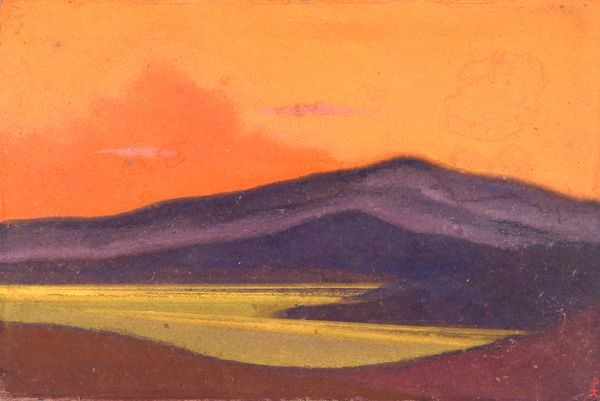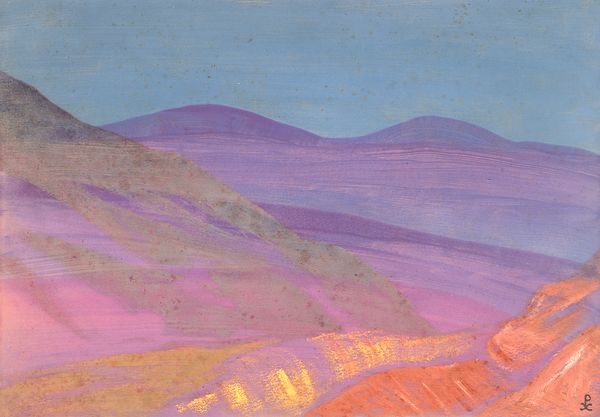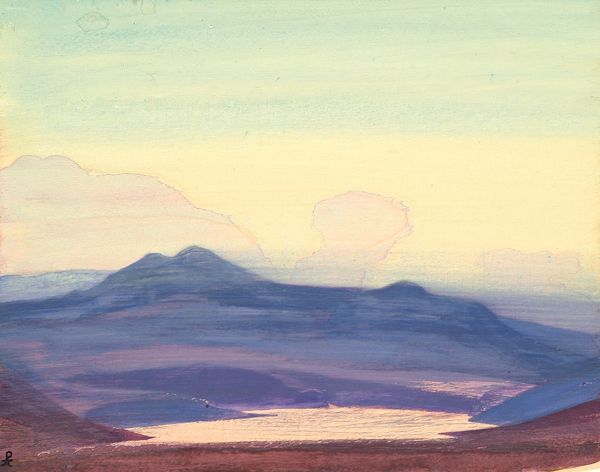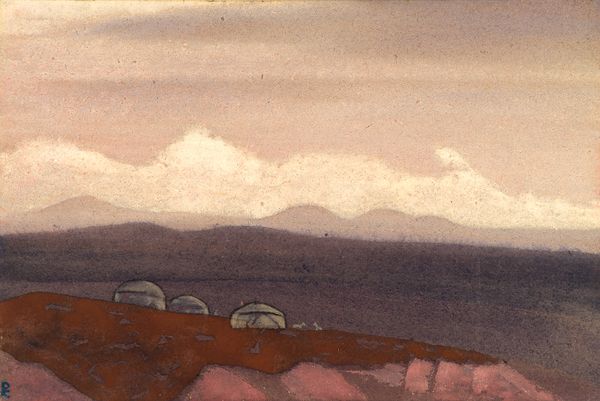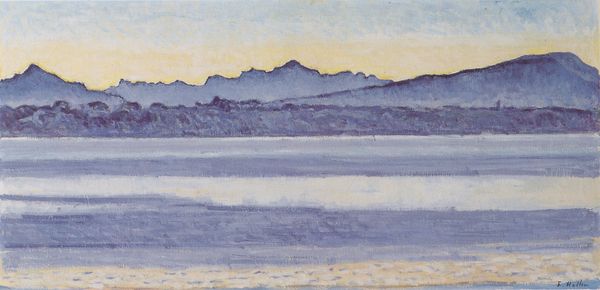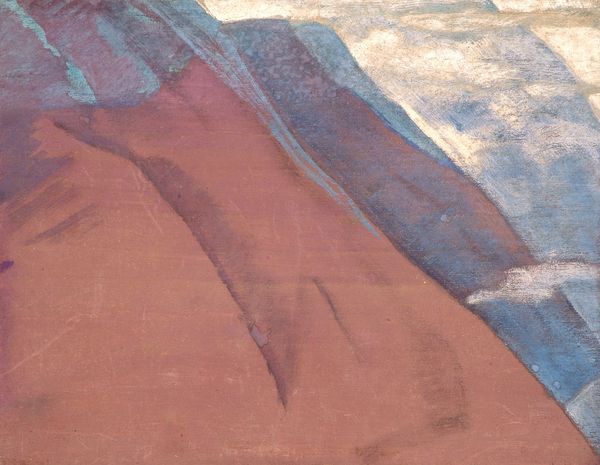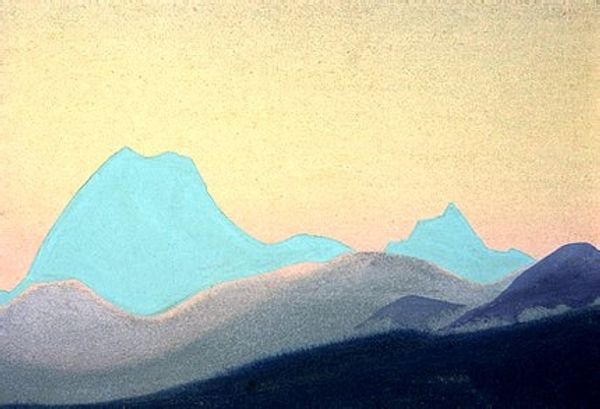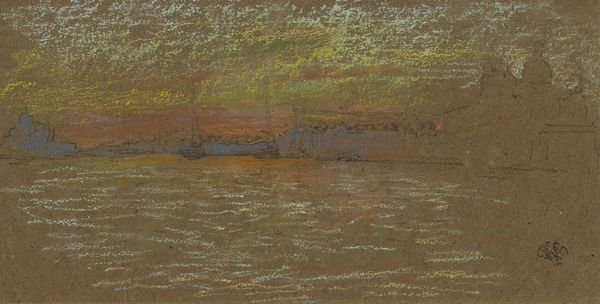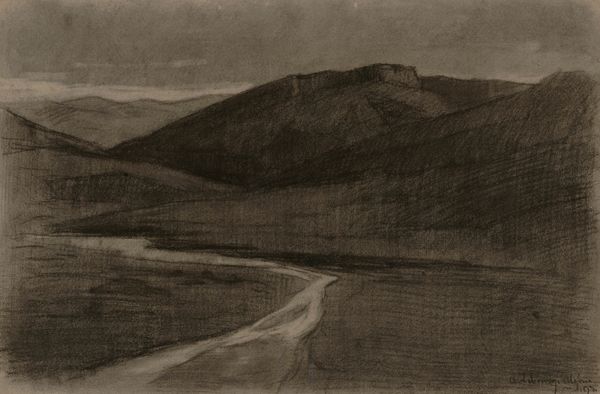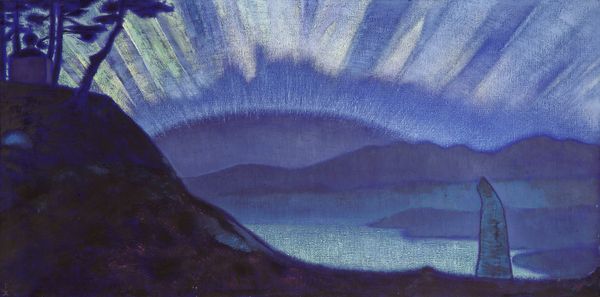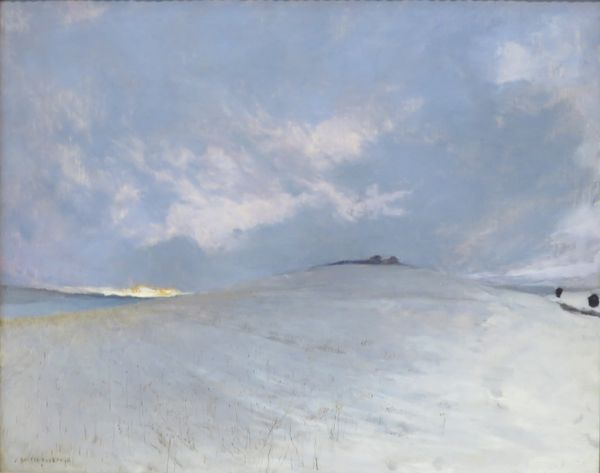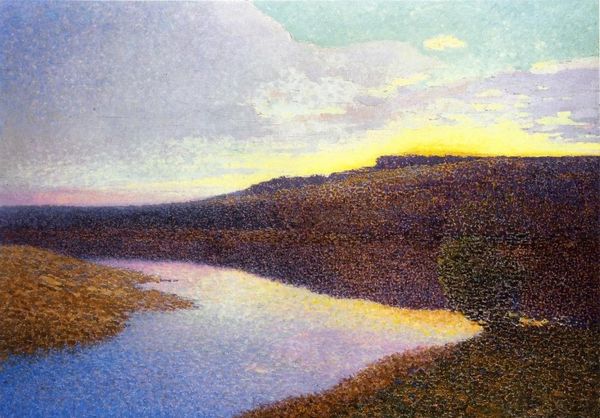
Dimensions: 45.5 x 30.5 cm
Copyright: Public domain
Curator: Welcome! We're standing before "Tsaidam Swamps," an oil painting crafted in 1929 by Nicholas Roerich. What's your initial response to it? Editor: A melancholic stillness. The pastel hues create a landscape that feels both serene and slightly desolate. There’s a distinct separation between the realms – land, water, and sky – divided by a clear formal hierarchy. Curator: Precisely! Roerich uses a limited palette – ochre, lavender, and muted greens – to construct the scene. Notice how he's reduced the landscape to its essential forms: horizontal bands delineating the ground, water, and sky, while varying linear strokes imply organic growth. There’s almost an early abstraction at play. Editor: I find that austerity compelling. Tsaidam, in what is now Qinghai province, held profound historical significance. This region, characterized by its sparse vegetation and extreme climate, reflects centuries of resource scarcity, and has historically been a flashpoint for territorial disputes and shifting demographics. This rendering strips the area down to the basics and hints at this deep sense of history, not just visually, but socially. Curator: Yes, Roerich's travels across Asia were pivotal. But the impact of the picture resides significantly within its simplification of form and texture. Look at the way light defines the slopes – the subtle gradations suggesting depth and contour, but without excessive detail. This speaks to his interest in conveying spiritual essence through minimal means. Editor: And who decided that “spiritual essence” is Apologetic silence on a site’s conflicts and inequalities? I think Roerich had a profound influence on art, particularly the use of bold colors and flattened perspective to suggest an underlying tension. Curator: But without such pictorial reduction, could we as successfully contemplate those other narratives that you speak of? How do we read absence? How can we represent a landscape void of specificity and people as representative of so much complex history? Editor: Perhaps art, with all its potential to represent, needs more intention to reveal difficult, albeit pertinent stories of people and struggle. Curator: A thought-provoking sentiment. It shows how seemingly simple compositions can open dialogues extending beyond aesthetics. Editor: Absolutely. "Tsaidam Swamps", far from being just a landscape study, reflects humanity's troubled relationship to its places.
Comments
No comments
Be the first to comment and join the conversation on the ultimate creative platform.
